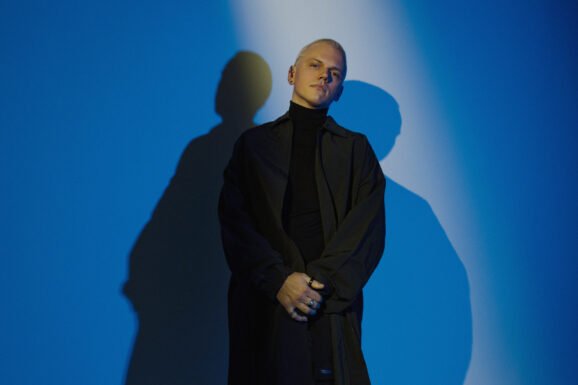You may know pianist/keyboardist Elliott Galvin from his work with the saxophonists Binker Golding and Mark Lockheart, or with Emma-Jean Thackery, Shabaka Hutchings or UK band Dinosaur, or even others. He is known as a trailblazer and high-level improviser on the UK scene, having released four solo albums before this one, The Ruin, which marks his signing with the prestigious Gearbox label. The album was recorded with highly touted and decorated engineer Sonny Johns (there’s something about that name Johns and engineering) and includes collaborators: bassist and vocalist Ruth Goller, Polar Bear drummer and Patti Smith/Damon Albarn collaborator, drummer Sebastian Rochford, and longtime allies, The Ligeti String Quartet, who grace five tracks. Shabaka guests on two tracks. Galvin plays piano, synthesizers, and electronics to dizzying effects.
On the surface, the album title is certainly not enticing. Yet, the concept behind this album is quite strong and provocative. It’s named after an ancient Anglo-Saxon poem from the 9th century AD about the former heyday of an unnamed ruined city. It is inspired by the feeling of living in England (“a country that feels like a living ruin”) the bleak landscape where Galvin grew up, and the notion that we all live amongst the ruins of our past selves collectively and individually.
To these ears, the album is overburdened with electronics, overshadowing Galvin’s piano playing, which deservedly should be given more space and focus. Yet, the intention of the record is genre-defying, primarily introspective, but akin to a musical puzzle, ranging from solo piano to classical to injections of kosmische (Krautrock) music. We’re not always sure how these pieces fit together when, in fact, all the material is taken from iPhone recordings that Galvin has played on his first-ever piano, an upright bought using money left by his late grandfather. The album is structured cyclically, so it gradually builds up and crumbles away, beginning and ending with solo piano.
At the heart of this concept is the opening track, “A House, A City,” with an accompanying video that sets fire to an old upright piano, shot with vintage equipment that makes it seem like the fire from the piano is burning through the film itself. The idea here is to deconstruct all done before in search of something new. It’s an audacious concept, but one can debate how well Galvin achieves it. We hear Galvin’s shimmering piano opening the second track, ‘From Beneath,” as his trio mates join on bass and drums, with Goller delivering her signature vocalizations over piano and blurry electronics. Midway through, Rochford establishes a thick groove, and the piece meanders around the funky beat and Goller’s robust bass. The soundscape grows denser and more haunting with the introduction of the string quartet on “Still Under Storms,” with Rochford’s kit work emerging through the mist. The drummer sets an infectious groove for “Gold Bright,” which features Shabaka on staccato bursts of bamboo flute peeking through amidst the unwavering percussion, ethereal electronics, and strings. “Stone Houses” revolves around a simple riff with pizzacato strings resembling Shabaka’s contributions on the previous until it pauses midway through to the sounds of winds, and Goller’s wordless vocalizations. This segues nicely to Shabaka’s intro on the Japanese flute, the shakuhachi for “High and Wide,” where he is the principal soloist backed by dense chords from Galvin, who doesn’t so much as comp but tinker.
“In Concentric Circles” is, as you may have guessed, a rhythmic piece punctuated by electronic ‘pops” and Rochford’s skittering snares. It has an Oriental feel, connecting to the previous piece, building intensity until decomposing to mere eerie sounds sans rhythm as it finishes. “As If By Weapons” is mostly a whoosh of industrial-sounding electronics that grows increasingly bleak without the strings that return on the foreboding droning of “Giants Corrupted.” By the time we get to “Fell Broadly” all is stripped away except Galvin’s synths and Goller’s bass and vocals. The song cycle ends, as it began with Galvin on solo piano for “These Walls.” Galvin’s The Ruin is moody, pensive, and ultimately captivating in an inexplicable way.









